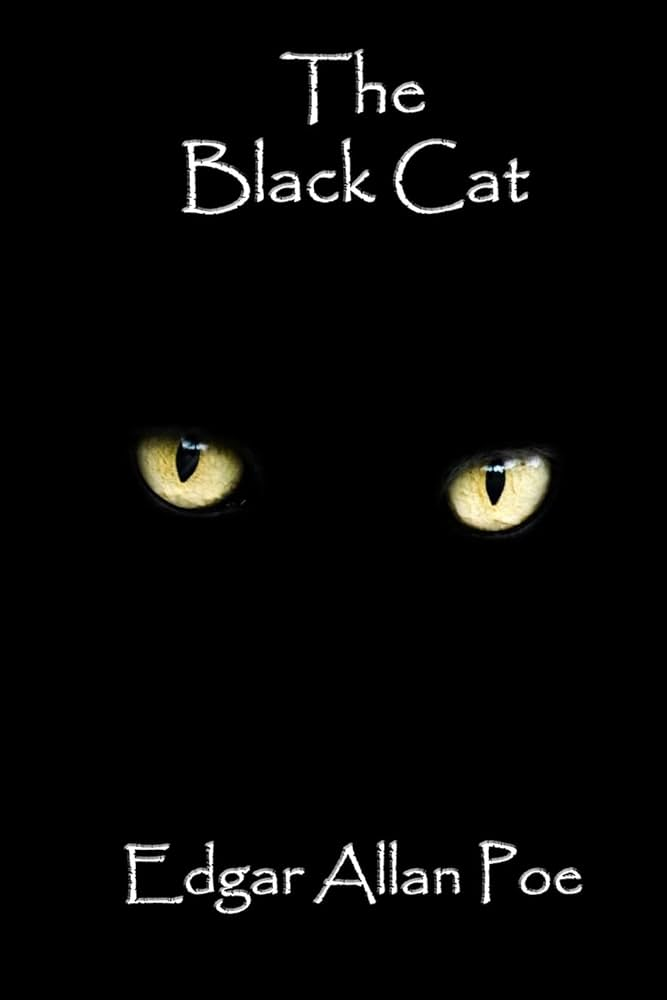The short story "The Black Cat" was written by American author Edgar Allan Poe. It was originally printed in The Saturday Evening Post on August 19, 1843.
Edgar Allan Poe:
Edgar Allan Poe, also known as Edgar Poe, was an American writer, poet, author, editor, and literary critic who lived from January 19, 1809, to October 7, 1849. His most famous works are his short stories and poems, especially the macabre and mystery genres. He is recognized by many as a key character in American literature, particularly in the fields of Gothic and Romanticism in the United States.Poe is credited with creating the detective fiction subgenre and making a substantial contribution to the nascent science fiction subgenre. He was also among the nation's first short story writers.He is the first well-known American writer to support himself only via his writing, which has led to a challenging life and career in terms of money.
The story's unidentified narrator loves animals dearly until he bizarrely starts mistreating them. The narrator punishes his beloved black pet cat, who bit him one night, by chopping off its eye and hanging it from a tree. The house burns down, but the burnt outline of a cat hanging from a noose is visible on one wall that survives. Soon after, he discovers another black cat that is identical to the first save for a white patch on its breast, but he also grows to detest it.
In his basement, he hides the body behind a brick wall. When the narrator taps on the wall and hears a screeching sound, the police arrive shortly after and discover not only the wife's body but also the black cat that had become inadvertently walled in with it and alerted them with its cry.
Edgar Allan Poe, a master of macabre and gothic literature, has left an indelible mark on the world of short stories. One of his most chilling works, "The Black Cat," delves deep into the human psyche, unraveling the dark recesses of guilt, paranoia, and madness. Published in 1843, this story is a quintessential example of Poe's ability to intertwine horror with psychological complexity.
Characters
1. The Narrator: The unreliable narrator of the story whose descent into madness drives the plot. Initially presented as a loving husband and pet owner, his personality deteriorates under the influence of alcohol and guilt.
2. Pluto: The narrator's first black cat, who is a symbol of his guilt and subsequent madness. The cat's mutilation and death mark the turning points in the narrator’s descent into violence and paranoia.
3. The Second Black Cat: Similar to Pluto but with a white mark, this cat represents the narrator's inescapable guilt and the supernatural retribution for his sins.
4. The Narrator’s Wife: A passive character who suffers the brunt of her husband's escalating violence, ultimately becoming a victim of his madness.
Themes
1. Guilt and Paranoia: Central to the story is the narrator’s overwhelming guilt for his violent actions, symbolized by the black cats. His paranoia intensifies as he projects his fear and guilt onto the second cat, leading to further irrational actions.
2. The Unreliable Narrator: Poe expertly uses an unreliable narrator to blur the lines between reality and hallucination. The narrator's skewed perspective challenges readers to discern the truth behind his confessions.
3. Supernatural and Psychological Horror: The story melds elements of the supernatural with psychological horror, creating a chilling atmosphere. The second black cat appears almost as a supernatural avenger, heightening the narrator’s fear and paranoia.
4. Violence and Retribution: Violence begets violence in Poe’s narrative. The narrator’s initial act of cruelty towards Pluto sets off a chain reaction of retribution that culminates in his ultimate downfall.
Title Significance
The title "The Black Cat" is significant on multiple levels. The black cat, a traditional symbol of bad luck and superstition, embodies the narrator's guilt and the sinister aspects of his psyche. The presence of not one but two black cats in the story underscores the theme of inescapable guilt and the consequences of one’s actions.
Background
Edgar Allan Poe wrote "The Black Cat" during a tumultuous period in his life. Struggling with personal and financial difficulties, Poe infused the story with his own experiences of psychological distress and the destructive nature of substance abuse. The story reflects his fascination with the human mind's dark side and the consequences of succumbing to one’s baser instincts.
Moral of the Story
The moral of "The Black Cat" centers around the destructive power of guilt and the inevitability of retribution. Poe illustrates how unchecked guilt can lead to madness and how attempts to bury one’s sins only result in their eventual, and often more horrifying, exposure. The narrator’s downfall serves as a cautionary tale about the consequences of violence and the inescapable nature of one’s conscience.
Narrative Technique
Poe employs a first-person narrative technique, allowing readers to witness the story through the eyes of the unreliable narrator. This perspective creates a sense of intimacy and immediacy, drawing readers into the narrator’s disturbed mind. The use of detailed, sensory descriptions enhances the story's eerie atmosphere, while the confessional tone adds a layer of psychological depth.


No comments:
Post a Comment